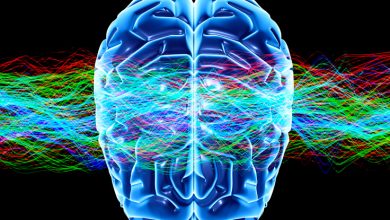Nucleus accumbens seems to play key role in relationship between stress and depression

People with more pronounced depressive symptoms and those who have experienced stressful life events tend to have alterations in the volume of the nucleus acumbens, according to new research. Additional changes in the volume and functional connectivity of specific brain regions were also observed. The study was published in Psychological Medicine.
Depression is a mood disorder characterized by persistent feelings of sadness, hopelessness, and a lack of interest or pleasure in previously enjoyed activities. Symptoms may also include changes in appetite, trouble sleeping, fatigue, and difficulty concentrating. Depression can cause significant impairments in an individual’s personal, social, and professional life. It is currently one of the leading causes of disability worldwide, with more than 10% of people experiencing at least one depressive episode during their lifetime.
Stress is a well-established risk factor for the development of depression. Stressful life events can trigger changes in brain chemistry and neurobiology, particularly in areas involved in mood regulation, such as the hippocampus and amygdala. Chronic exposure to stress hormones like cortisol can disrupt these brain processes and increase vulnerability to depression. Additionally, this relationship could go both ways: people with a reduced ability to cope with stress tend to be more susceptible to depression.
Study author Yizhou Ma and colleagues noted that previous studies had identified changes in the volume and function of certain brain regions associated with both stressful life events and symptoms. depressed. These changes include reduced hippocampal volume, decreased thickness or volume of the paralimbic cortex, compromised white matter integrity in the corpus callosum, and impaired connectivity within frontostriatal neural networks, orbitofrontal and limbic.
To further study these associations, they analyzed data from the UK Biobank, focusing on brain volume and functional connectivity linked to stressful life events and depressive symptoms.
The UK Biobank is a large-scale biomedical database and research resource, containing in-depth genetic and health information from half a million UK participants, aimed at improving the prevention, diagnosis and treatment of a wide range of serious and life-threatening illnesses. . Stressful life events are significant events that disrupt an individual’s usual activities and require adjustment, such as the death of a loved one, divorce, job loss, or serious illness.
This analysis included neuroimaging data from 22,195 UK adults, collected between 2014 and 2019, with prior data provided at least once before this period. The mean age was 63 years at the time of neuroimaging and 55 years at initial data collection. The average interval between the two data collection points was eight years.
The UK Biobank does not specifically assess stressful life events, but researchers have developed a measure based on responses to screening questions about events such as illness, injury and bereavement. Depressive symptoms were assessed using items from the Patient Health Questionnaire-2, with data available at both collection points.
Results indicated that depressive symptoms present at initial data collection were associated with subsequent stressful events eight years later. Conversely, earlier stressful life events were also related to depressive symptoms at the later time of data collection, suggesting a bidirectional relationship between stress and depression.
Functional magnetic resonance imaging (fMRI) showed that individuals experiencing many stressful events tended to have smaller nucleus accumbens volumes and reduced fractional anisotropy in the main forceps region, a measure that reflects integrity of the white matter tract. White matter tracts are bundles of myelinated nerve fibers in the brain that connect different regions of the brain. Reduced fractional anisotropy indicates diminished structural coherence and function in these brain regions.
Depressive symptoms were significantly associated with extensive white matter hyperintensities (increased image brightness, indicating a worse state), thinner cortex, smaller subcortical volume, and white matter microstructural deficits, primarily in the corticostriato-limbic structures of the brain.
The only change observed in depressive symptoms and stressful life events was a reduction in nucleus accumbens volume. The study authors tested statistical models suggesting that depressive symptoms and stressful life events might moderate the effects of each on this brain region, with the results supporting the possibility of partial mediation.
“The nucleus accumbens could play a key role in the reciprocity between stress and depressive symptoms,” conclude the authors of the study.
The study sheds light on the neural correlates of depression and stress. However, it should be noted that the analyzes presented in this article that include neuroimaging data do not allow definitive conclusions about cause and effect to be drawn.
The article, “Interrelationships between stress and depressive symptoms: The essential role of the nucleus accumbens,” was authored by Yizhou Ma, Peter Kochunov, Mark D. Kvarta, Tara LeGates, Bhim M. Adhikari, Joshua Chiappelli, Andrew van der Vaart. , Eric L. Goldwaser, Heather Bruce, Kathryn S. Hatch, Si Gao, Shuo Chen, Ann Summerfelt, Thomas E. Nichols, and L. Elliot Hong.
News Source : www.psypost.org
Gn Health





